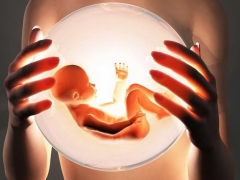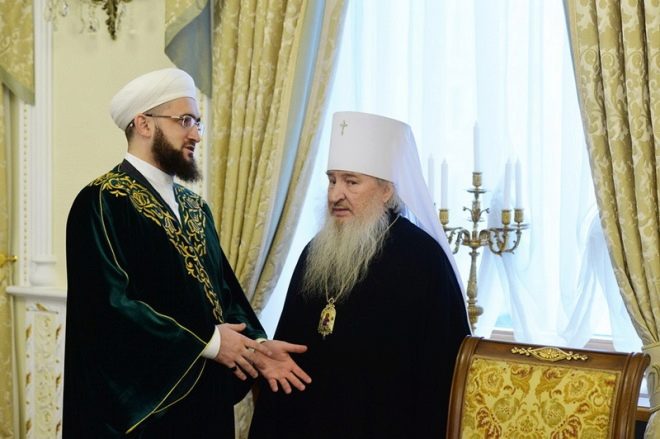Assisted Reproductive Technologies
In connection with the growth of male and female infertility, modern assisted reproductive technologies are in great demand today. They give an opportunity to become parents to those people who half a century ago had no opportunity to conceive and bear a child on their own. Today, ART is actively supported by the state, there are programs for financing and co-financing of these methods, thanks to which costly procedures have become available under regional and federal quotas.
In more detail about what medical technologies are considered auxiliary reproductive, what efficiency and advantages they have, we will tell in this article.
What it is?
Once most of the technologies and methods of treatment of infertility, which are used today in the world and in Russia, were considered something fantastic, impossible in practice. However, over time, everything has changed, and now any married couple with absolutely any form of infertility can count on being given a chance to experience the joy of motherhood and fatherhood.
Reproductive technologies today include the following types of medical care:
- ECO (in vitro fertilization);
- GIFT (transfer of the partner's germ cells to the woman's fallopian tubes);
- CIFT (surgical transfer of germ into fallopian tubes);
- ICSI (intracytoplasmic sperm injection);
- techniques with the use of donor biomaterial (oocytes, semen, as well as donor embryos);
- surrogacy (gestational courier delivery of the fetus of the couple);
- deferred parenthood programs (cryopreservation of oocytes, spermatozoa, embryos, ready for replanting);
- AI (artificial insemination by spouse sperm or donor sperm);
- preimplantation genetic diagnosis of embryos;
- germ reduction with threatening multiple pregnancies.
According to the World Health Organization (this organization monitors morbidity levels, treatment standards, fertility rates and the percentage of infertility in all countries of the world), in Russia today about 15-17% of couples are infertile. There are currently about five million families in the registry of infertile couples, and 70% of them require reproductive medical care. The number of cases of female infertility over the past 10 years has increased by 14%, and male - by 22%.
The basis of all methods gave IVF. It was there that the development of other areas began, such as pre-implantation diagnostics, ICSI, etc. In the world of IVF, there has been more than 40 years, in our country since 1986, although some work has been done in research laboratories since the middle of the last century.
Characteristics and methods of conducting
The goal of all technologies used by reproduction specialists is to obtain healthy offspring in cases where it is impossible to do this naturally. Let's look at how individual methods are conducted, and how they differ:
In vitro fertilization
This is a technology in which fertilization is carried out outside the female body, in the laboratory or, as people say, “in vitro”. A woman undergoes a preliminary stimulation of the ovaries, which makes it possible to get not one, but several eggs, followed by a puncture of the follicles.Oocytes are taken from their familiar environment and they organize a “meeting” with the spermatozoa of a partner or donor. For several days, the growth of zygotes is observed, after which 2-3 embryos are transferred into the uterine cavity of the woman.
ICSI
This type of in vitro fertilization, which is necessary in the presence of severe male infertility factor. The entire therapeutic cycle takes place, as in the usual IVF, with a difference only at the stage of fertilization. Ovules and sperm are not just placed in the same laboratory bowl. The best of tens of millions of infertile male sperm cells are placed directly inside the egg by means of jewelry micromanipulations. As a result, even the representatives of the stronger sex, who have almost no live sperm, suitable for in vitro fertilization or by natural means, are likely to become daddy.
Donor biomaterial
The program of donation of eggs and spermatozoa is developed in our country thanks to state support and the emergence of banks of reproductive materials, as well as specialized agencies. If an IVF, ICSI, or other method is needed, it can be performed using sperm or eggs from anonymous donors who are completely healthy and have been screened for all infectious and non-infectious diseases.
With this technology, the couple gets a child who is genetically native only to one of the parents. Without donor biomaterial, reproductive methods could not be used by single men and women who dream of having children.
Surrogacy
This method involves bearing a child whose biological parents are spouses conceived from their gametes, another volunteer woman. Surrogate motherhood can help single men, as well as married couples, if pregnancy can pose a real threat to the life of a woman. Often, such methods have to be resorted to for those who, for anatomical reasons or because of their age, cannot bear and bear children.
Unlike other ART, this method is not supported by the state at the financial level, but is not prohibited by law. Although it is she who causes the most heated debates and discussions in society.
Pre-implantation diagnosis
This is a genetic study of embryos that are cultivated after fertilization during the IVF process, but before transferring them into the uterine cavity. It is shown when one of the parents has genetic diseases that can be inherited by the offspring, as well as to determine sex in case of detection of diseases that are chromosomally linked to the sex chromosome (hemophilia, etc.).
Conducted using a variety of genetic techniques that differ in terms of research, cost, technology. More than one and a half hundred different hereditary and chromosomal anomalies are determined with great accuracy in an embryo that is only 2-3 days old. Only healthy children are transferred to the uterus.
Artificial insemination
This technology is quite simple and most close to the natural conception. Just the sperm of the husband or donor is injected directly into the uterus, into the mouth of the tubes. Conception occurs inside the body of a woman and pregnancy, if it occurs, is no different from others.
This method is recommended for women and men with autoimmune infertility, men with impotence, women with impaired vaginal microflora that cannot be corrected by other means, a cervical factor, single women who do not have a partner, but want a child.
GIFT and GIFT
In case of HIPT, doctors take partners' germ cells, mix them and immediately inject into the fallopian tube.With EIFT, embryos are introduced into the fallopian tube, which were obtained in the laboratory. Both methods are performed once and usually combined with diagnostic laparoscopy, although the introduction is quite possible through the vagina, cervix through the introduction of a thin and flexible catheter under constant ultrasound guidance.
Indications and contraindications
Assisted reproductive technologies can come to the aid of a large range of problems with the reproductive system in both men and women. And even with mutual infertility, there are chances of becoming parents. ART is shown when other methods and ways to eliminate the causes of childlessness have no result and are recognized as ineffective. Most often it is:
- obstruction of the fallopian tubes, their complete or partial absence;
- idiopathic infertility, the causes of which could not be identified;
- immunological infertility;
- endometriosis;
- polycystic ovary syndrome;
- most forms of male infertility.
All techniques are among the high-tech, they require special training from doctors, experience, care. Therefore, the list of contraindications, which was approved by the Ministry of Health, is also quite large:
- congenital or post-traumatic uterus malformations that make gestation impossible (only surrogate motherhood is permissible);
- tumors of the female reproductive system of a benign nature, in need of surgical treatment;
- malignant tumors, regardless of their location in the body;
- ovarian neoplasms;
- acute inflammation of any of the organs of a woman (temporary ban until recovery);
- mental illness.
A couple before any of the assistive technologies gives a large list of analyzes. Reproductive care may be denied with significant violations identified in the course of laboratory studies, with unprotected genital infections, syphilis, etc.
VTR are conducted only on the basis of clinics and departments of hospitals, which received the relevant licenses of the Ministry of Health.
Efficiency
This is the most painful question, since 100% of the probability that a pregnancy will come does not give any of the methods. About 35% of the ECO protocols are being successfully completed in Russia. In this case, they wear babies before childbirth and only 80% of women who are lucky enough to become pregnant on the first attempt successfully give birth. The probability of becoming pregnant in the second and third protocols is slightly higher, but after three attempts the probability decreases significantly.
Intrauterine insemination with husband's sperm is completed successfully after the first attempt in 11-16% of cases. When using donor sperm, the probability is higher - a little more than 20%.
GIFT gives about 20% of successful courses of treatment, and GIFT - about 30%. The use of frozen biological material does not reduce the likelihood of success of IVF, but, alas, does not increase it.
Problems of ethical and legal regulation
New reproductive methods give rise to many legal and legal issues. So, surrogacy in the country is not prohibited, but plainly and not regulated by laws, and it was almost impossible to register a child born to a surrogate mother for a single parent until recently. Several major judicial incidents allowed the courts to work out certain recommendations on this issue, but there are still quite a few “gaps”, “loopholes” and inaccuracies in the legislative framework.
Even more difficult is the situation with moral and ethical problems. Not all religions approve parishioners in IVF programs. Thus, Catholicism completely rejects ART. Orthodoxy and Islam allow that only under the condition that the gametes of the husband and wife are used for fertilization. The donor biomaterial is categorically rejected because, in the opinion of the ROC ministers and representatives of Islam, violates the sanctity and sacrament of the marriage union.
Disposal of unwanted embryos, poor-quality embryos is condemned by Orthodoxy, reduction or pre-implantation genetic diagnostics equate to abortion. But Islam allows it. Surrogate motherhood is categorically unacceptable in either religion, considering financial transactions of this kind immoral, since they look like child trafficking and the devaluation of motherhood as a whole.
Judaism is more loyal to ART, allowing almost everything to its believers, except for using a close relative of barren parents as a surrogate mother. In Buddhism, they advocate any solution to the problem, if it brings happiness and joy to all participants.
In medicine, when it comes to assisted reproductive technologies, try to adhere to the principles of bioethics. The secret of anonymous donor germ cells should be respected, the doctor should not disclose to outsiders the fact of reproductive care to certain patients. The value of life implies an attitude towards the embryo as a full-fledged person from the very first days of its existence.
It is forbidden to dispose of embryos that have remained redundant with the addition of poisons and toxins. The doctor, according to bioethics, can only leave them unattended until cell division stops naturally.
Bioethics is quite strict with surrogate mothers who are not allowed to blackmail their “customers” and demonstrate their claims to the child they have born.
In general, the topic of public perception of reproductive care is rather slippery. Neither officials, nor representatives of legislative power, nor doctors, nor religious figures, nor patients themselves can come to a single opinion in it. It is impossible to dispute only the statistics, which says that about 5 million people live on the planet today, who were conceived and born only thanks to the efforts of doctors and scientists in the field of reproduction and embryology. Without ART, their lives would be impossible.
About assisted reproductive technologies, see the following video.

































